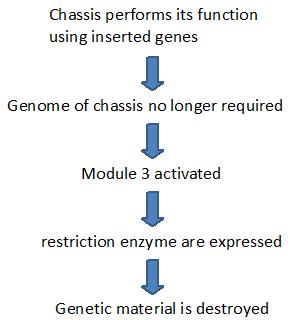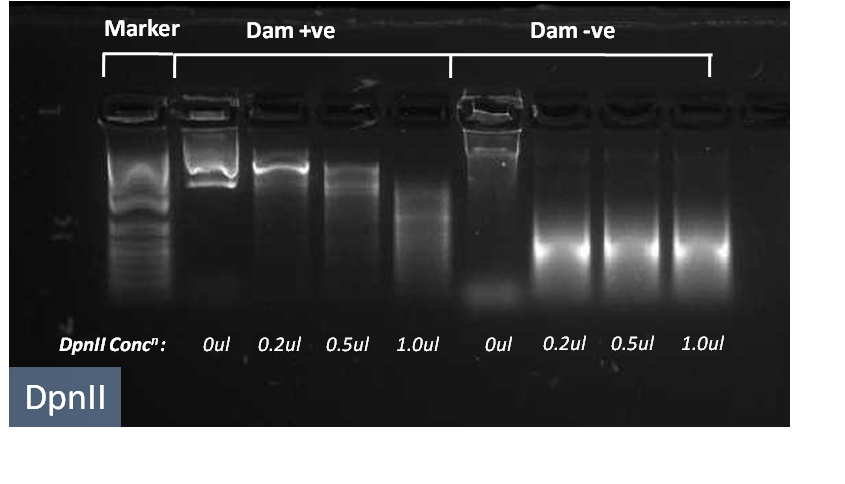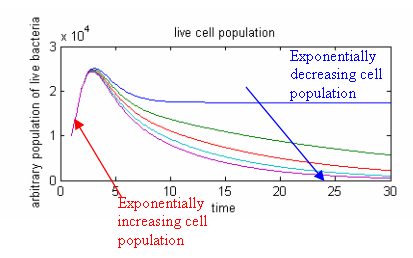Team:Imperial College London/M3
From 2009.igem.org

Contents |
Module 3: Genome Deletion

Module 3 is the final module of the system. The E.ncapsulator has successfully completed its job of polypeptide production and encapsulation. Now, it needs to be prepared to be converted into a safe pill carrying the polypeptide of interest. This is done by removing the genetic material which renders the cell inanimate.
Reusable module for removal of genetic material
Removal of genetic material by the use of restriction enzymes prevents the accidental transfer of DNA to other gut microflora, which could lead to development of virulence. This module is a highly reusable module for any chassis system where there is a need to remove genetic material after genes are expressed.
The genetic circuit
Under the control of a thermoinducible promoter (K098995), when the temperature is raised to 42°C, the promoter is activated, and the restriction enzymes DpnII (K200009) and TaqI (K200010) are produced. These restriction enzymes cut frequently in the genome, digesting the entire genetic material. Dam methylase (K200001) is constitutively produced at a low amount. This prevents leaky expression of restriction enzymes from damaging the genome prematurely. Consequently, a balance exists between Dam methylation and restriction enzyme activity.
Our results
Wetlab
The activity of the restriction enzymes is critical to module 3. We have tested this using a genomic digest assay.
The restriction enzymes DpnII and TaqI are shown to cut genomic DNA into small fragments, shown on the right by a smear of bands. We have further tested the restriction enzymes in DNA which have been methylated by Dam enzymes and shown that there is essentially no cleavage at low concentrations of restriction enzymes.
Drylab
We have also attempted to link our restriction enzymes with cell death using a model.
The population increase is initially exponential as the restriction enzymes have a delay in production. As the restriction enzymes accumulate in the cell, the cell growth starts to slow down. If the lambda cI promoter is strong enough, killing rate will greatly exceed cell division rate, and there will be an exponential decrease in cell population.
Project Tour


Module 3 Contents





 "
"









